Have you wanted to try STEAM projects at home with your kids but have absolutely no clue how to start? Do you love the idea of hands-on learning but need a little push to actually try it? Consider this your Quick Start Guide to getting started with STEAM!
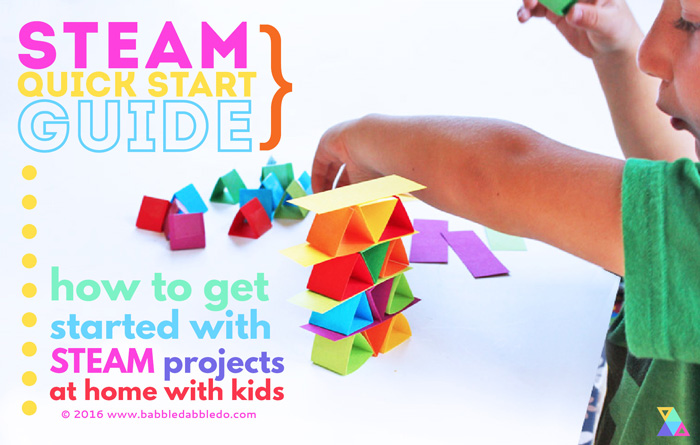
STEAM is the buzzword on everyone’s lips in the educational world these days and yet I still see most people scratching their heads as to what an actual STEAM project is or what STEAM really means on a practical level, especially for parents who may be interested in trying STEAM projects at home.
I wrote this Quick Start Guide to empower you to feel confident incorporating STEAM activities into your creative time at home. By then end of this guide I want you to have a good idea of what STEAM is, tips for trying STEAM projects at home, and some great places for you to go for STEAM project ideas.
A Quick Note: I come to STEAM projects as a designer and architect, not an educator, and I personally see STEAM ideals as the equivalent of the design process.
WHAT IS STEAM?
Before we get started let’s review what STEAM is. STEAM stands for Science, Technology, Art, Engineering, and Math. STEAM learning is project-based, cross-disciplinary, and teamwork/learning from your peers is an important component.
The benefits of a STEAM model of learning are:
It teaches children about CONNECTIONS between subjects. The best STEAM projects bridge two or more subjects. For instance a symmetry art project will explore art based on geometry/math, building an insect hotel will require combining both science and engineering; it’s these connections that make the STEAM educational model more applicable to real world problems.
It focuses on questions and children seeking their own answers. Rather than learning through memorization or repetition, STEAM encourages children to seek their own answers and to value their own opinions.
It celebrates experimentation. STEAM is all about experimenting, trying, and yes, failing. It is so important to get kids comfortable with failure; our best innovators have failed many, many times but get back up and try, try again.
It’s interactive and hands-on. The aspect of STEAM I personally like best is that it is hands-on. We’re not doing worksheets or watching a film about a subject, we are making stuff with our hands! We’re getting messy and asking questions and having fun doing it!
How to Get Started with
STEAM Projects at Home
1. Start Small
The best pace to start is with a few memorable and EASY projects. Don’t order motors and circuit kits off the bat, if you try complicated and involved projects right away, you are likely to get frustrated and scrap the whole idea of trying STEAM. While STEAM is all about experimenting and learning from mistakes, I do think the first few STEAM projects you try should be easy, engaging, and fairly foolproof. Save the more complex projects for when you and your family are in the STEAM groove!
Here are 3 Super Simple STEAM Projects to try that are guaranteed to delight your children:
2. Gather Supplies
Did you know that you can do many, many STEAM projects with simple materials you have at home? Psst… my favorite place to shop for STEAM projects supplies is the grocery store. Here are my top 10 supplies for STEAM Projects:
- Vinegar
- Baking Soda
- Pipe Cleaners
- White Glue
- Toothpicks/ Bamboo Skewers
- Straws
- Clay (inexpensive colorful modeling clay is hard for kids to resist)
- Dish soap
- Oil
- Food Coloring
Here are 3 STEAM projects try using these materials:
And here are 40 materials you can use for at-home projects that you probably already have RIGHT NOW.
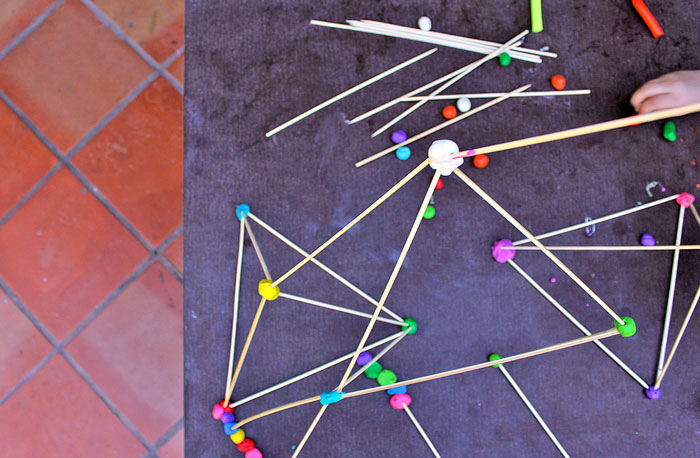
3. Carve out 20 minutes in your week to start
Children’s interest level is different depending on the day of the week, their mood, how school went earlier…. I suggest that you carve out small chunk one afternoon on a day they won’t be too exhausted from school or activities and plan your first project.
Let your children know in advance that you want to try something fun with them that afternoon so they aren’t surprised when you interrupt their Minecraft game to get them to come to the table! 20 minutes should be more than enough and if the STEAM experience you provide them with is fun and memorable, you can be sure the next time you mention you are trying a project they will come running!
This STEAM project is short and memorable: Cosmic Suncatchers.
4. Work together with your kids but hands-off their process!
This is by far my favorite tip and probably the hardest thing to do, in fact I still struggle with this. STEAM projects are all about collaboration and learning from your teammates. If you are doing projects at home with your child, you are their de facto teammate NOT their teacher! REMEMBER THIS!
Don’t try to impose your ideas on the project; listen to your child’s thoughts and let them lead the process. If this is difficult for you (I know as a control freak this is HARD) here’s a tip:
Do the project alongside your child.
You will be at the table together and you and your child can talk back and forth about what is happening and discuss results but they will be the master of their own project. This works well for me in all types of creative endeavors, not just STEAM projects. In art this is especially important: Back off your kids’ work!
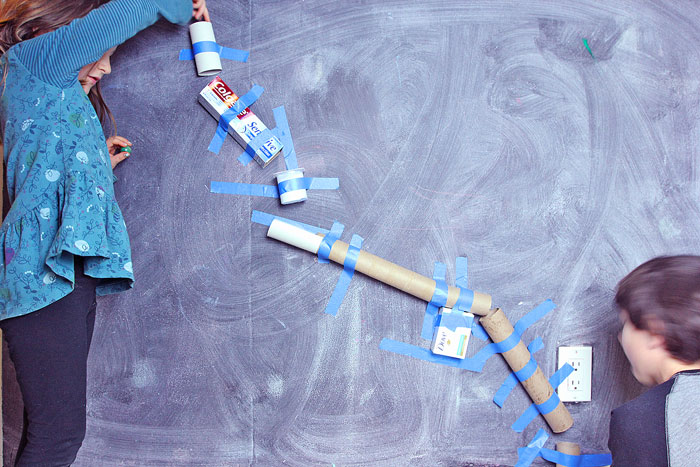
5. Ask Questions
As parents we are often used to answering our children’s questions, not asking them. STEAM, however is all about discovery and self-guided learning.
The best way for kids to learn how to problem solve is by asking questions.
When your children ask you a question about an observation or process answer them with a question about what they see/think/feel might be going on. Get your children into the habit of asking lots of questions and experimenting to find the answers, this is the heart of STEAM based learning.
Resources
Now you have an idea of how to try STEAM at home you may be on the hunt for lots and lots of STEAM project ideas. Well, I’m not gonna leave you hanging! Here are some fab resources on the web and in book form!
1. 25 STEAM Projects
One place to start is our STEAM Project Guide with 25 STEAM projects we have tried as family. The projects are appropriate for a variety of ages and vary in difficulty from easy to more involved.
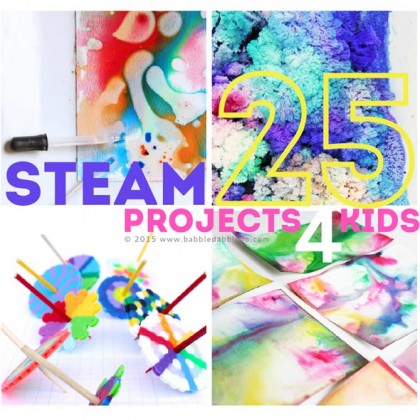
2. STEAM Blogs
Here are some of my favorite online resources for STEAM projects. All of these bloggers focus partly or completely on STEAM projects:
Left Brain, Craft Brain
Buggy & Buddy
Teach Beside Me
STEAM Powered Family
Preschool STEAM
The STEM Laboratory
What Do We Do All Day?
Figment Creative Labs
Pink Stripey Socks
3. STEAM books
Here are two wonderful books featuring STEAM projects!
STEAM Play & LEARN
My book STEAM Play and Learn for kids preschool age and up!
STEAM KIDS
STEAM Kids is the first in a series of eBooks for kids ages 5-10. It can be purchased as an eBook here or in print form from Amazon here.
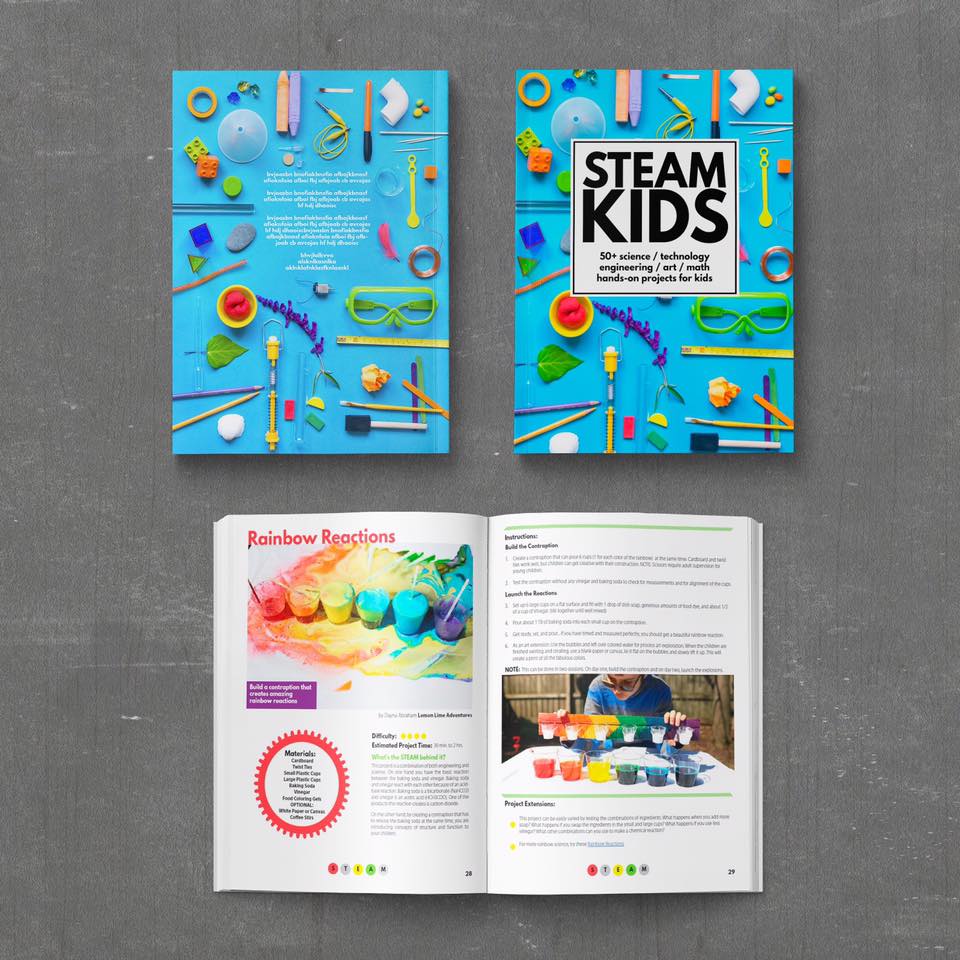
Okay, do you feel like you have a better handle on what STEAM is and how to start trying STEAM projects at home with your family?
Trust me you don’t have to be an educator or designer or scientist to start doing STEAM; you only need the desire to try! I hope our Quick Start Guide leaves you feeling good about getting started
If you still have questions or feel like something is holding you back, please leave a comment below with the challenge you are facing and let’s solve it together!
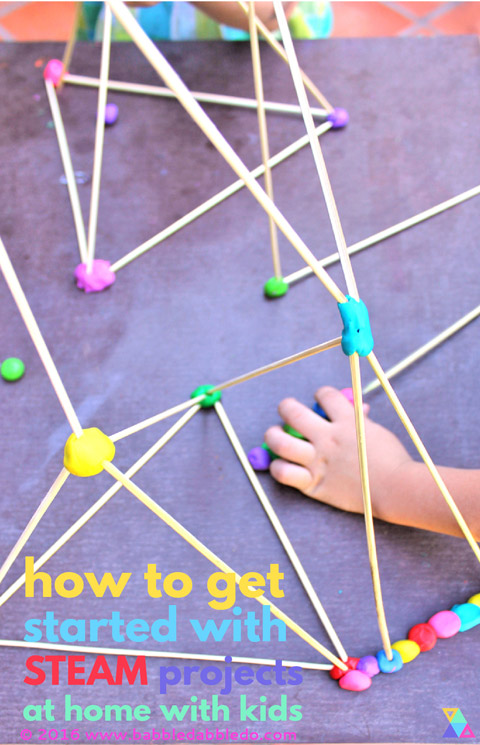
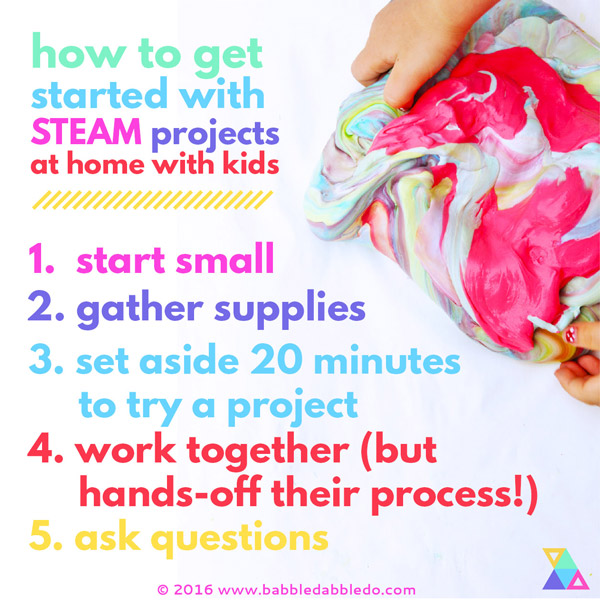
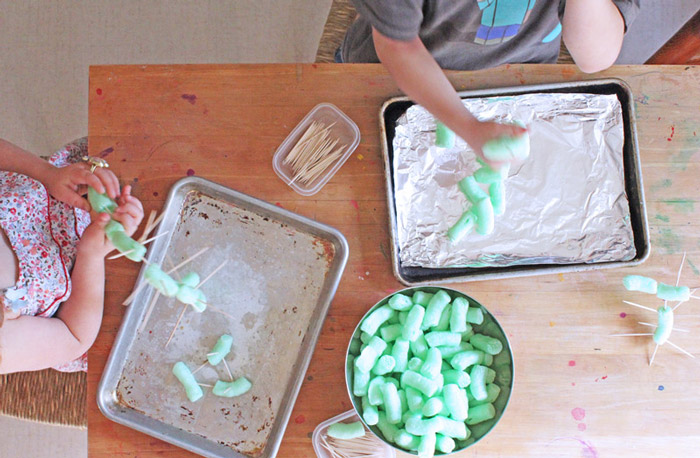
I have tried to access your publication, signed up for it, but nothing has happened after receiving it, it doesn’t appear to be active. Just one page with Key statements. Could you resend the booklet please? Thanks
Hi Barbara,
The ebook is launching tomorrow. If you pre-purchased it will be sent to you on the launch date. Email me at anadziengel@gmail.com if you don’t get it!
Thank you so much!
Ana
Why can I only download the first page of this ebook?Stacy
The ebook is launching tomorrow 🙂 The download is a list of STEAM activities. Does that answer your question? If you pre-purchased it will be sent to you on the launch date. Email me at anadziengel@gmail.com if you don’t get it!